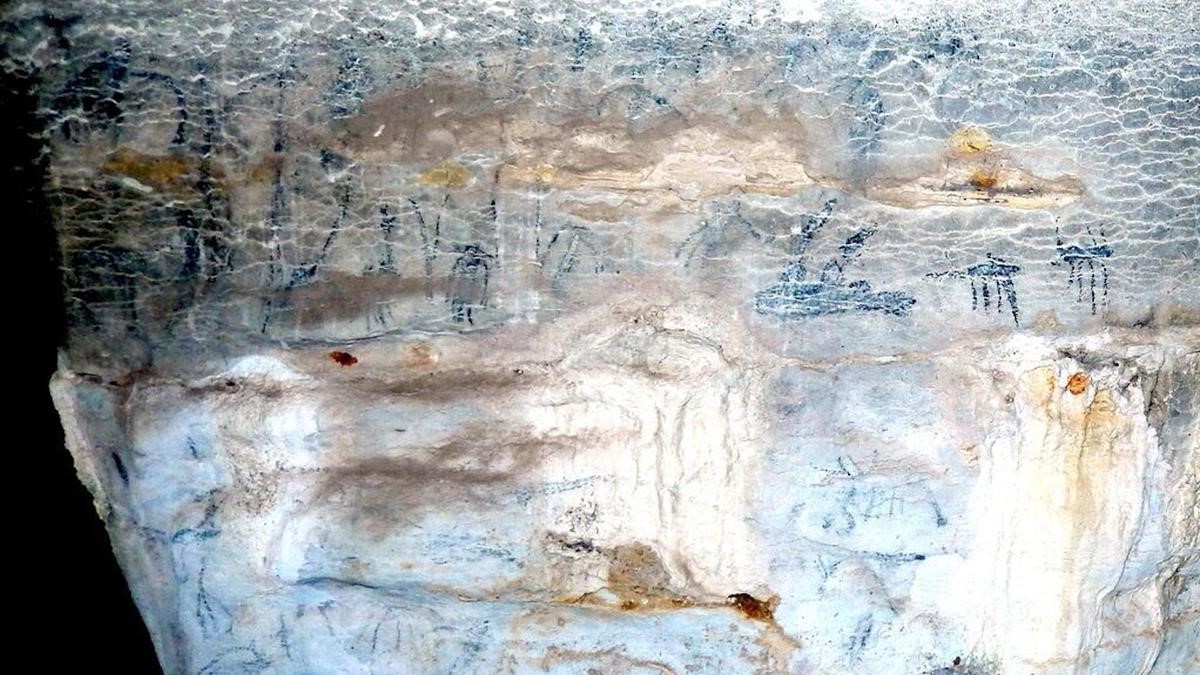Description

Disclaimer: Copyright infringement not intended.
Context
- The recent discovery of prehistoric rock art in the Andriamamelo Cave in western Madagascar has unveiled a treasure trove of unique and previously unseen pictorial depictions, marking a notable departure from the basic symbols found in earlier Madagascar rock art sites.
Details
Notable discoveries
- Egyptian Influences: Some depicted scenes appeared to be related to Egyptian religious motifs from the Ptolemaic period (300-30 BCE).
- Connections to Ethiopian and Afro-Arab Worlds: Symbolism and writings on the cave walls indicated ties to the Ethiopian and Afro-Arab spheres.
- Borneo Art Style: The prevalent symbology and motifs resonated with a cave art style from Borneo dating back two millennia.
- Depicted Extinct Animals: Astonishingly, the cave art potentially portrays three extinct animals of Madagascar - a giant sloth lemur, elephant birds, and a giant tortoise.
- Artistic Elements:
-
- Noteworthy Figures: The art comprises various drawings, including animals, human-like and animal-like forms, geometric designs, and unique M-shaped symbols.
- Egyptian References: Notable images include depictions of Egyptian motifs such as a falcon (Horus), Thoth, and figures resembling Anubis.
- Mysterious M-Figures: The ubiquitous M-shaped symbol found in the cave art resembled the ancient Ethiopian Amharic alphabet, "hawt" (ሐ), which translates to the "breath of life" in some Austronesian languages.

Significance
- Madagascar's people, language, and culture are believed to have ancient connections to Borneo and influences from continental eastern Africa.
- The discovery's implications hold significance in the reconstruction of Malagasy early history.
About Andriamamelo Cave
- The Andriamamelo Cave is situated in the western part of Madagascar.
- The cave is nestled within the karstified limestone terrain of the Paysage Harmonieux Protege de Beanka, contributing to its unique geological structure.
- This cave is a notable part of a broader karst region that includes the Parc National de Bemaraha, acknowledged as a UNESCO World Heritage site due to its exceptional karst landscape and biodiversity.
- Additionally, it is proximate to the Antsingimavo karst area, an area that has been relatively less studied compared to other karst regions in the vicinity.
- Being part of the karstified limestone terrain, the Cave represents an essential component of the broader karst landscape, characterized by intricate underground formations resulting from the dissolution of soluble rocks like limestone.

Conclusion
In essence, the remarkable findings of the Andriamamelo Cave art provide glimpses into potential ancient cultural connections between Africa and Asia, offering tantalizing insights into Madagascar's rich historical past, yet leaving intriguing mysteries about its origins unanswered.
|
PRACTICE QUESTION
Q. Explain the significance of the recent discoveries of prehistoric rock art in Madagascar's Andriamamelo Cave in revealing potential cultural connections between Africa and Asia. (250 Words)
|
















